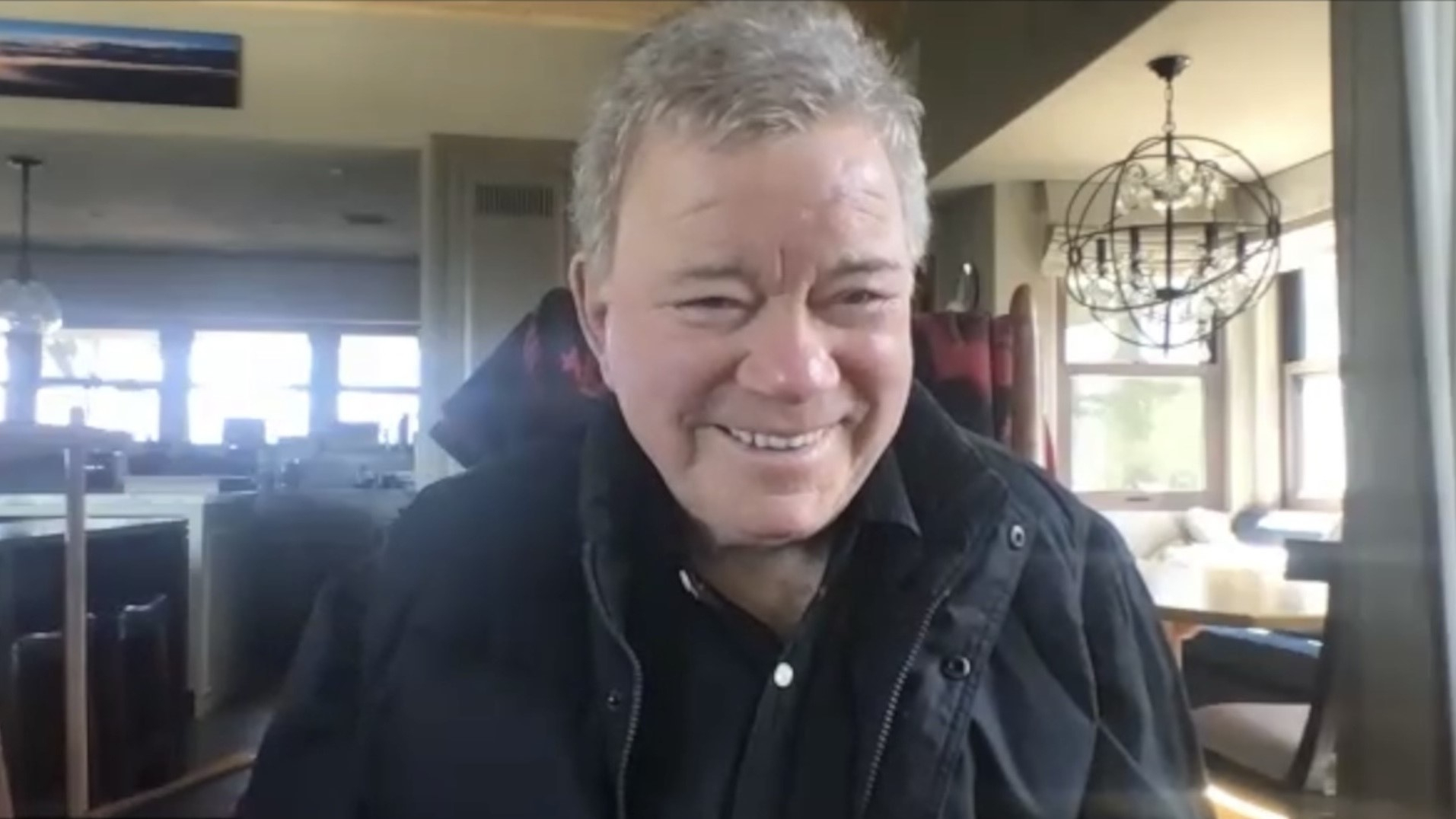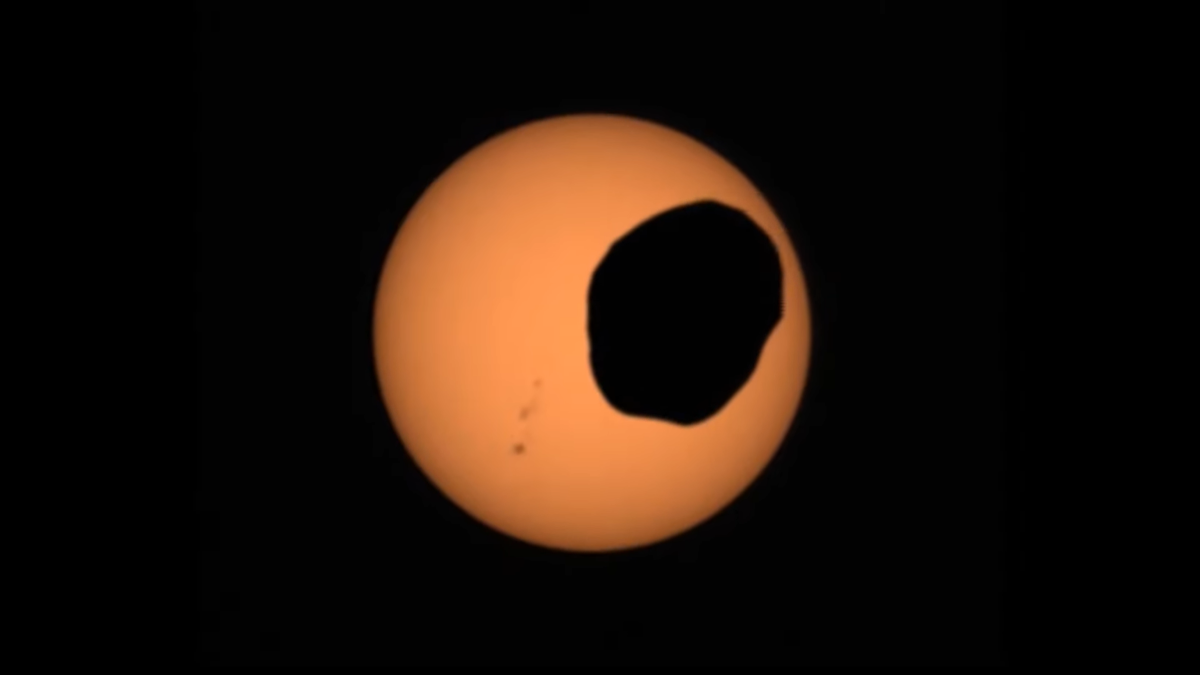William Shatner is beaming in to see the 2024 total solar eclipse from Indiana (video)
Captain Kirk got philosophical when speaking about the upcoming solar eclipse, saying it's not worth worrying about clouds.
BLOOMINGTON, Ind. — Of the many cities and small towns along the April 8 solar eclipse's path of totality, Capt. Kirk is only beaming down to one. Bloomington, Indiana, will play host to the original "Star Trek" captain, William Shatner.
Indiana University (IU) is marking the April 8 solar eclipse with the Hoosier Cosmic Celebration, a performance-packed event at IU's Memorial Stadium where some of the expected 300,000 visitors to Bloomington will watch the highly anticipated celestial alignment.
Shatner will be joined on the afternoon of April 8 by performers from IU's musical theatre and dance programs, as well as an appearance by retired NASA astronaut Mae Jemison and a concert by Janelle Monáe. As star-studded as the Cosmic Celebration is, Shatner is playing a critical role in the big day. The 93-year-old "Star Trek" actor and philanthropist will be performing a spoken word piece as part of the celebration's program, with his last words ending just as totality is beginning.
Related: Why I’m staying home for the April 8 solar eclipse
He spoke with Space.com and other local Indiana media ahead of his upcoming Indiana trip, and he noted the possibility of rain or clouds getting in the way of experiencing something wonderful.

What if the weather clouds out your solar eclipse?
William Shatner: It's the Sword of Damocles. It's the animal outside the door. And nobody talks about it because it's perfectly probable that there will be an enormous thunderstorm the instant the sun is eclipsed. It's also perfectly possible that it will be a clear, bright, lovely, warm spring day, and we will all enjoy the benefits of the Hoosier weather. What happens if it's cloudy? I don't know. It's like looking into the pit of a volcano saying, "What do we do about that thing?" And it's nothing can be done. There's nothing can be done."
Shatner spoke at length about the wonders of getting to see something as special as a total solar eclipse. It is, after all, a complete coincidence that the sun and moon appear relatively the same size in the sky.
That's not the case on many other worlds. For instance, scientists have witnessed Mars' tiny moon Phobos transiting the sun, as seen by the Curiosity rover from the surface of the planet, but the relative size of the moon and sun in the Martian sky don't create the same totality phenomenon seen during solar eclipses on Earth.
Get the Space.com Newsletter
Breaking space news, the latest updates on rocket launches, skywatching events and more!

What does this solar eclipse mean to you?
Shatner: One of the curses, and one of the benefits of humanity is our curiosity. And we'll never overcome that curiosity. "What's there? Why is it hiding?" I mean, even this eclipse, "How did it happen? Oh, you mean a great big piece of debris...brushed up against Earth, causing it to scoop out an amount of Earth to make the moon?" How do we know that, and how do we do that? How did we see it? I mean, the mystery of the beauty of our existence — to examine that is a voyage we all have to take...
To me, the magic of the eclipse, the extraordinary events it all took in the heavenly bodies to cause this eclipse, should make us ponder the mystery of existence, of our own existence, of the existence of everything else and how unified everything is...
The eclipse should bring about all of us thinking about the mystery of existence. And the beauty of the fact that we live and are able to observe it from this little rocky outpost called Earth, and how valuable that is to keep alive, to keep healthy, because that's why we are alive. So this event, the eclipse, should bring about a whole manifestation of the mystery of everything...
It's going to be so much fun-filled, with some of the answers to the mysteries and some of the mysteries posed as questions. You'll have a great time.
The total solar eclipse on April 8 will sweep across the United States from Texas to Maine, passing through Indiana around 3 p.m. EDT, with Bloomington experiencing 4 minutes and 2 seconds of totality between 3:04:50 p.m. EDT and 3:08:53 p.m. EDT. The forecast is calling for partly cloudy skies in Bloomington on April 8, but, like the captain said, "There's nothing can be done."
Join our Space Forums to keep talking space on the latest missions, night sky and more! And if you have a news tip, correction or comment, let us know at: community@space.com.

Josh Dinner is the Staff Writer for Spaceflight at Space.com. He is a writer and photographer with a passion for science and space exploration, and has been working the space beat since 2016. Josh has covered the evolution of NASA's commercial spaceflight partnerships and crewed missions from the Space Coast, as well as NASA science missions and more. He also enjoys building 1:144-scale model rockets and human-flown spacecraft. Find some of Josh's launch photography on Instagram and his website, and follow him on X, where he mostly posts in haiku.








